SUMMARY
This is AI generated summarization, which may have errors. For context, always refer to the full article.
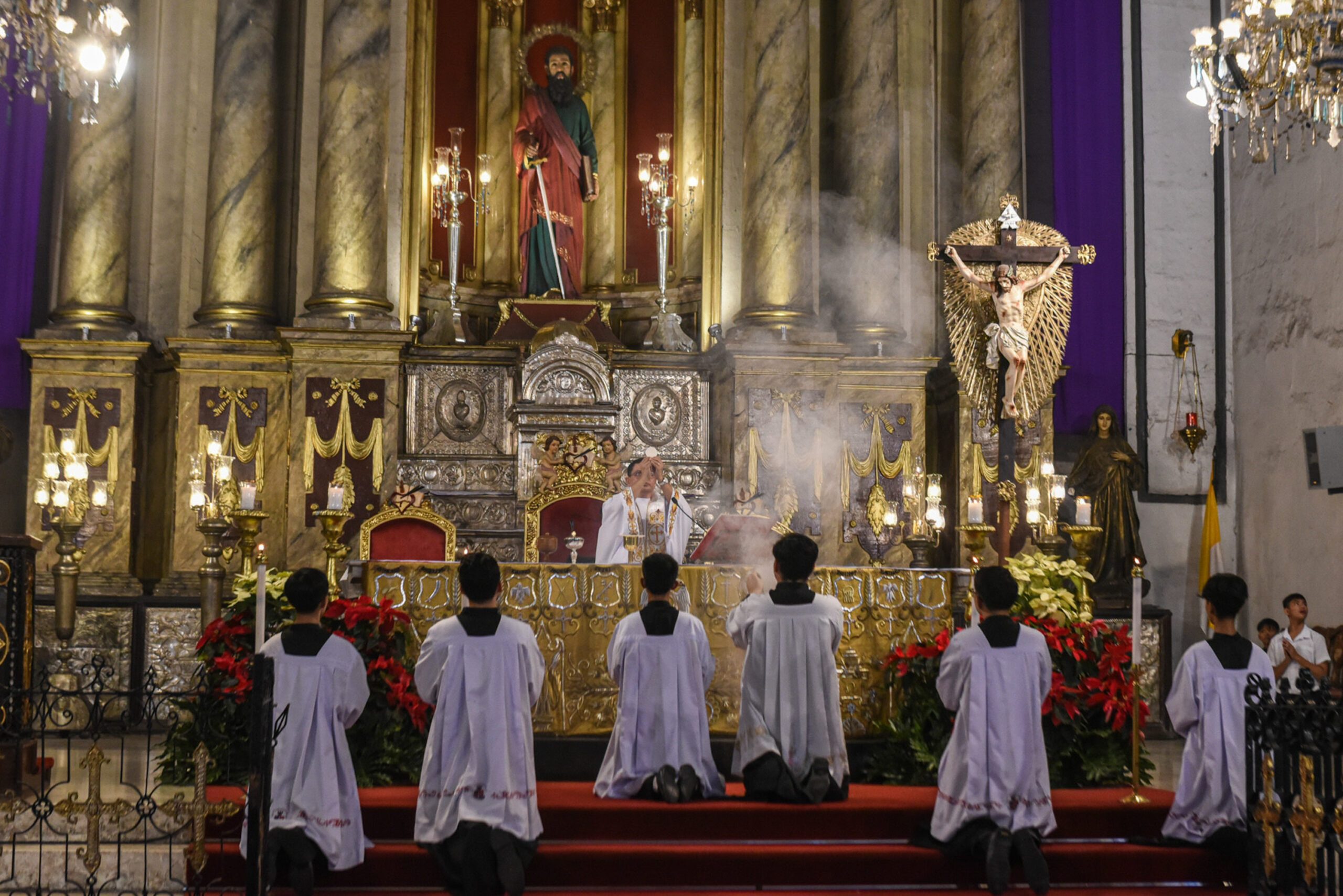
MANILA, Philippines – It was a drizzly December evening. A wooden door with the elaborately carved image of Saint Augustine of Hippo, one of the greatest saints in the Catholic Church, welcomed massgoers on Friday, December 15.
Exactly 451 Christmases since it was founded in 1571, the Philippines’ oldest stone church – San Agustin Church in Intramuros, Manila – rang its bells for another nine days of Simbang Gabi or Misa de Gallo. These novena Masses, a Filipino tradition dating back to the 1600s, are held in the evening or at dawn, symbolizing the nine months that Mary bore Jesus in her womb.
A few steps away from the front door, on the left side, more than two dozen tombstones served as a somber reminder of the weight of history. The names of the dead, belonging to alta sociedad (high society) during the Spanish colonial era, were engraved on the floor with the letters “RIP” (Rest in Peace” or “DOM” (Deo Optimo Maximo, “To God, the Best and Greatest”).
Who were they? What did they wear? Why were they important? Reading each of their names – Maria Dionisia Tuason de Patiño, who died on May 28, 1862; Bonifacio Sainz, August 28, 1882; and Emilia Delgado, August 6, 1868, among many others – stoked the imagination as we entered this Neoclassical-Baroque structure.
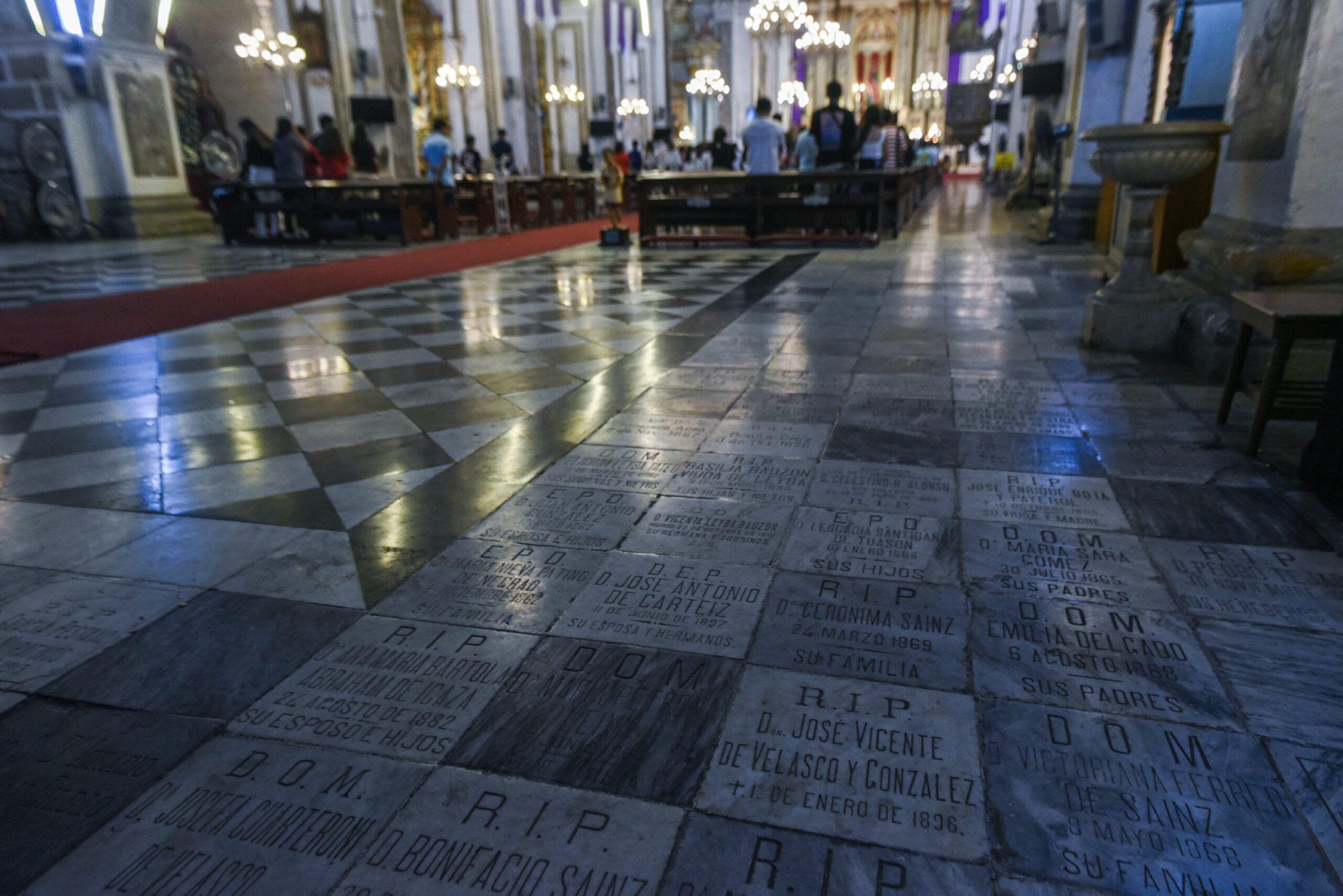
The choral music ahead of the 7:30 pm Mass on Friday, however, was enough to jolt us back to the present. “Ang nagsindi nitong ilaw…. Walang iba kundi ikaw…,” the Christmas carol went. It was the song “Star ng Pasko (Star of Christmas),” popularized by broadcast giant ABS-CBN in 2009, giving a sense of the new in the old, the old in the new.
A mix of tourists, students, workers, and residents, a mingling of men in T-shirts and women in pants, trickled into this 16th-century church where indios (the name by which Spaniards called Filipino natives) in camisas or ternos heard the Misa de Gallo centuries ago.
We counted around only 200 massgoers on Friday, leaving many seats empty, as more Catholics heard Mass at the 2,000-seater Manila Cathedral only a few blocks away. Still, it was awe that filled many of the Catholics who joined Simbang Gabi at San Agustin Church that evening.
For them, it was history coming to life. At San Agustin Church, attending Simbang Gabi also meant finding one’s roots, reconnecting to the faith of the ancients.

‘Where our ancestors worshiped’
“I feel that we’re going back to the past even while in the present,” Jasdilan Talento, a 21-year-old woman from Albay, said in an interview with Rappler. During the Mass, Talento prayed for herself and her family, “that Christmas may be happy for all of us.”
Leonardo Chua Jr., 53, said it was his first time to attend Simbang Gabi at San Agustin Church. He came with his friend Sunday Galias, who said the Mass at San Agustin is “more solemn” with a more conducive ambience.
Chua, who usually attends the traditional Latin Mass at Our Lady of Victories Church in New Manila, Quezon City, said he prayed for a deepening of his faith in Christ. Our Lady of Victories Church is run by the Society of Saint Pius X or SSPX, a group of priests who believe the Roman Catholic Church went astray after the Second Vatican Council of 1962 to 1965.
Chua said the “Novus Ordo” Mass – or the Roman Catholic Mass as it has been celebrated since 1969, which can be said in the vernacular, not only in the traditional Latin – can also bring grace depending on one’s faith. At San Agustin, he said, “I felt the ‘presence’ of the church because it’s an old, old church.”
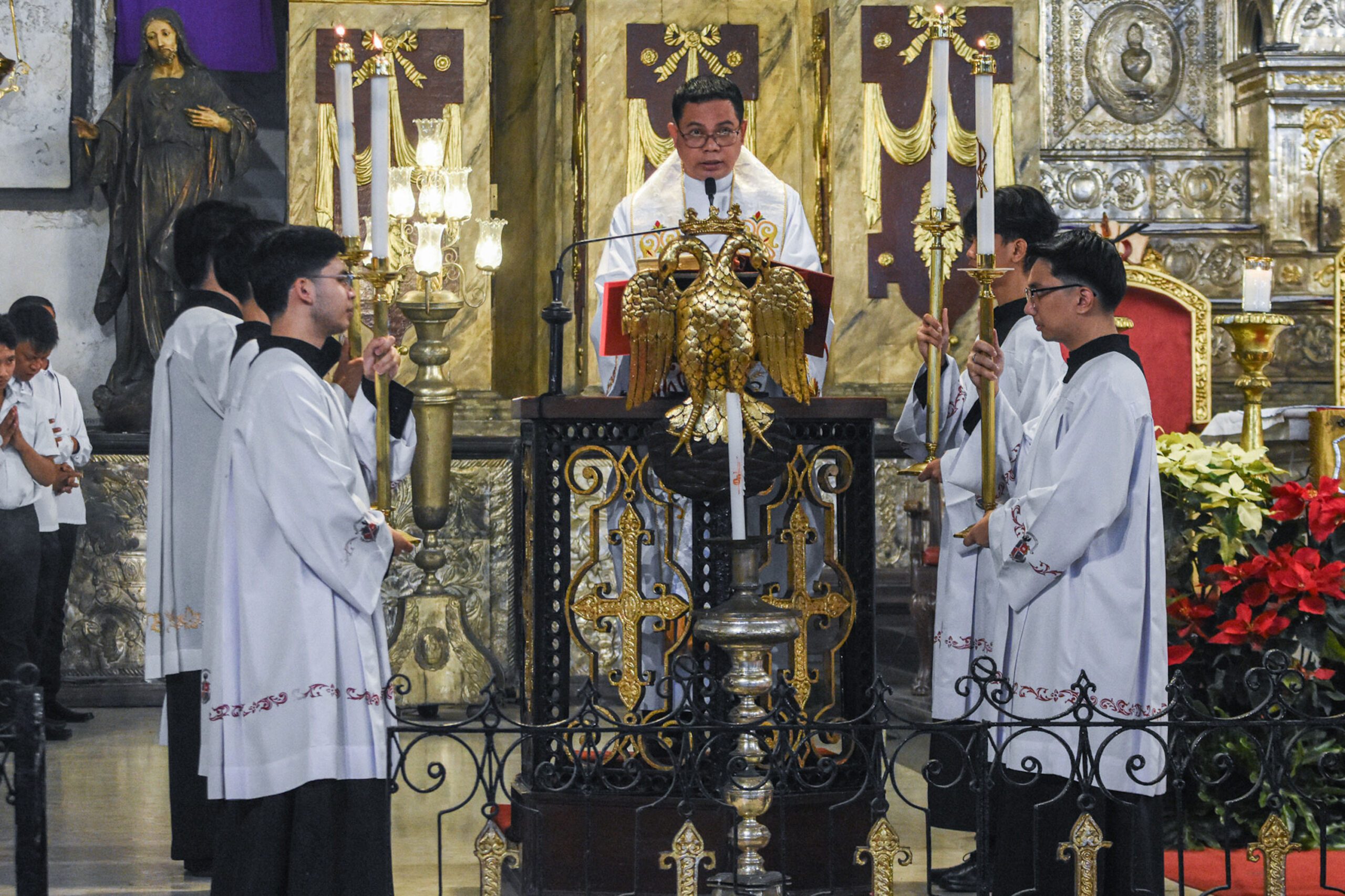
Gian Yamson, a 22-year-old fresh graduate from Nueva Ecija, almost forgot it was the first night of Simbang Gabi. He accidentally entered San Agustin Church on Friday, however, as he was on his way home from his workplace, which was also in Intramuros.
Like Talento, Yamson said being in San Agustin Church gave him a sense of “history.” Like Galias, Yamson said the stone church feels “solemn.”
Yamson said that based on his knowledge of history, San Agustin Church was one of the places where Catholicism in the Philippines began. “It makes me happy to see where our belief started,” he said. “It’s like we are just wearing clothes that are different from theirs, but this is the same place where our ancestors worshiped.”
‘Relatively unchanged’ through the centuries
Made of lime mortar and adobe stone, San Agustin Church was completed in 1607 and was included in the UNESCO World Heritage List in 1993. San Agustin Church is run by Augustinian priests, formally known as the Order of Saint Augustine, whose friars were the first Catholic missionaries in the Philippines in 1565.
San Agustin Church is “relatively unchanged since its construction,” said the National Museum.
It was, in fact, once known as the Iglesia de San Pablo (Church of Saint Paul). Proof of this is the giant niche at the center of the church sanctuary: it is not the statue of Saint Augustine but of Saint Paul, the hot-tempered persecutor of Christians who later became one of the Church’s two greatest apostles (along with the first pope, Saint Peter), holding his sword.
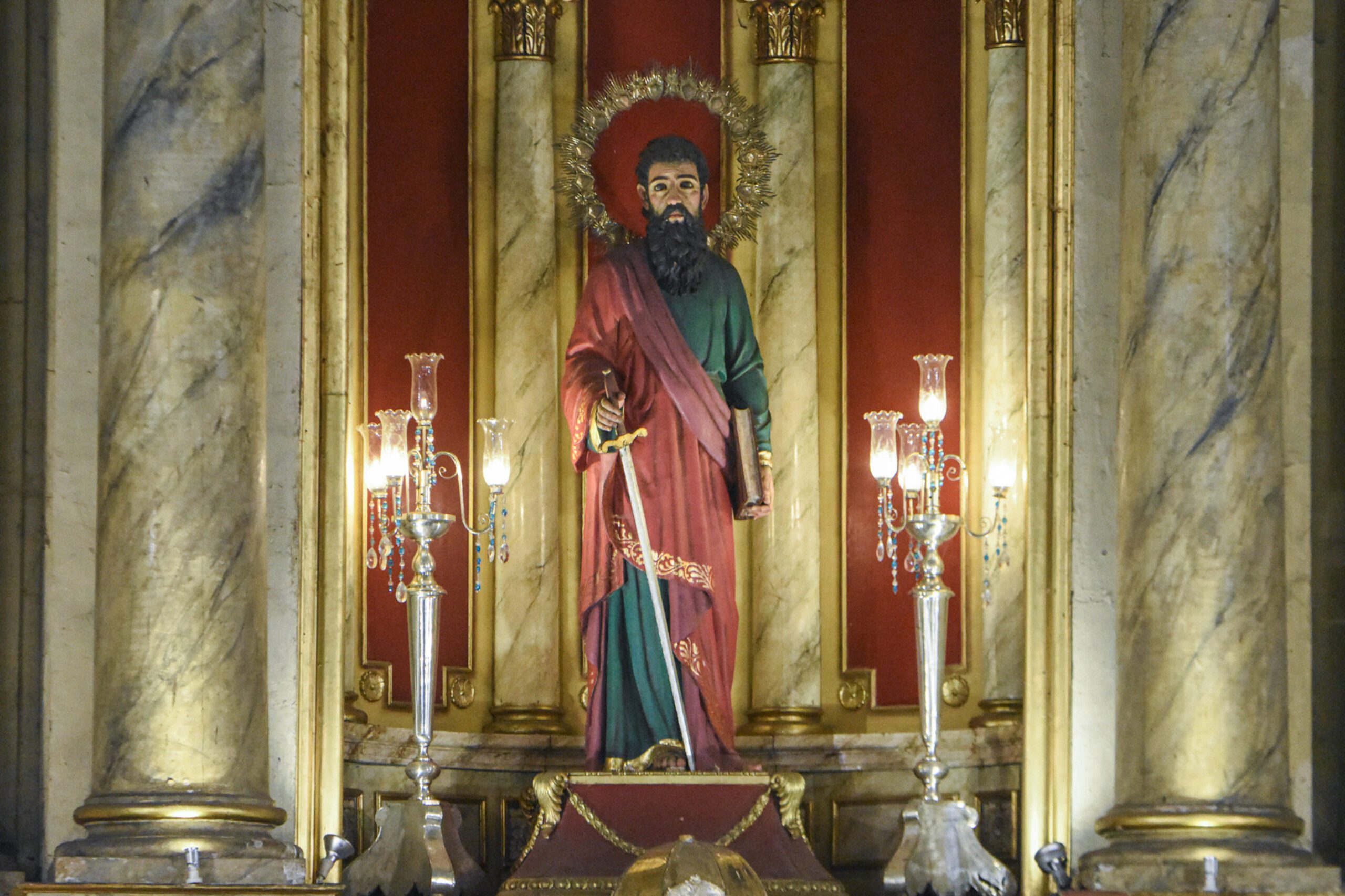
According to San Agustin Church, this was because the friars’ primary concern during the Spanish colonial era “was the conversion of the still non-Christian natives.” This was why the Augustinians “placed their mother church and monastery in the country under the patronage of Saint Paul, the apostle to the Gentiles.”
While the Philippines is now a predominantly Catholic country, the mission continues for Augustinian priests. At San Agustin, the responsibility is now on the shoulders of Father Reynante Balilo, 48, an Augustinian priest for the past 12 years.
“Being the parish priest, it warms the heart to see our countrymen, our churchgoers, our Catholic faithful during this time of Simbang Gabi,” said Balilo, the parish priest of San Agustin since 2022. “And because this is a historical church, it was built in 1571, many of the faithful also experience a different feeling whenever they enter San Agustin.”
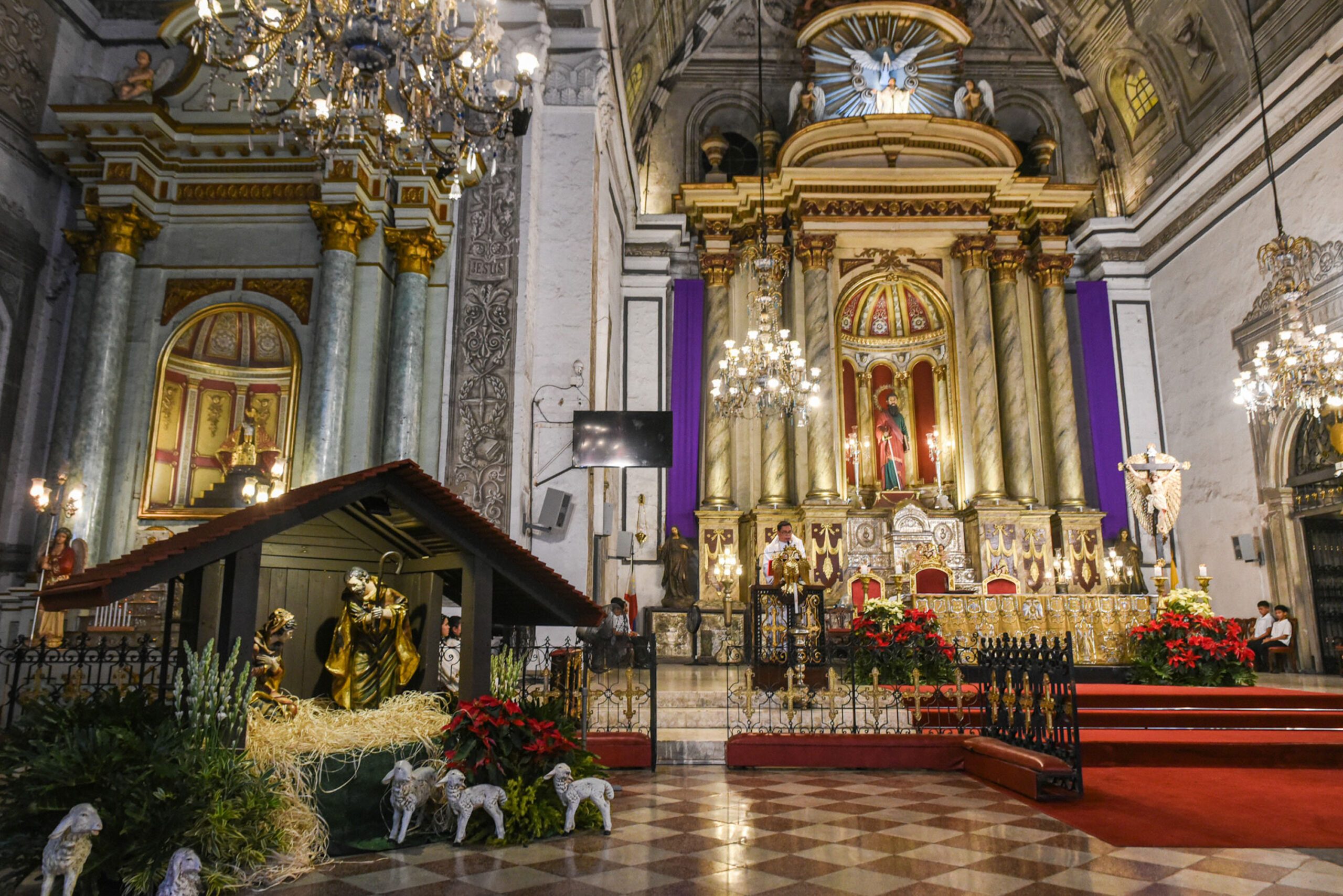
Inviting more Catholics to visit San Agustin Church, Balilo said, “Here in San Agustin, we also have Augustinian saints who testified to the mysteries of God in their lives.” He then pointed to the statues of Saint Rita of Cascia, a patron saint of mothers; and La Consolacion or Our Lady of Consolation and Cincture, patron saint of the Augustinians since at least the 17th century.
The many antique statues at San Agustin, keeping the faithful under their watchful gaze, open the soul to deeper imagination. It is the place where the saints of old join our Simbang Gabi, singing “Alleluia” to the tune of “Star ng Pasko.” – Rappler.com
Add a comment
How does this make you feel?
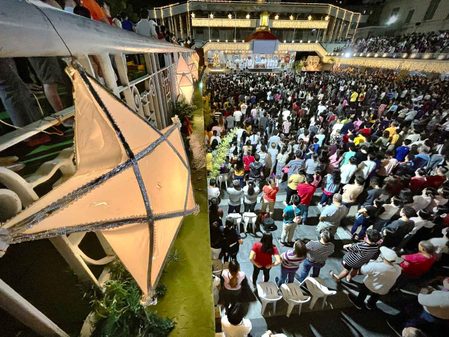
![[The Wide Shot] Peace be with China](https://www.rappler.com/tachyon/2024/07/wideshot-wps-catholic-church.jpg?resize=257%2C257&crop=311px%2C0px%2C720px%2C720px)
![[OPINION] A critique of the CBCP pastoral statement on divorce](https://www.rappler.com/tachyon/2024/07/TL-cbcp-divorce-statement-july-19-2024.jpg?resize=257%2C257&crop=285px%2C0px%2C722px%2C720px)


![[The Wide Shot] Was CBCP ‘weak’ in its statement on the divorce bill?](https://www.rappler.com/tachyon/2024/07/cbcp-divorce-weak-statement.jpg?resize=257%2C257&crop=258px%2C0px%2C719px%2C720px)

![[REFLECTION] Mary, Mother of the West Philippine Sea](https://www.rappler.com/tachyon/2024/07/may-mother-west-ph-sea-july-19-2024.jpg?resize=257%2C257&crop=293px%2C0px%2C751px%2C750px)
![[OPINION] Ignorance and prejudice](https://www.rappler.com/tachyon/2024/07/tl-ignorance-and-prejujdice.jpg?resize=257%2C257&crop_strategy=attention)
There are no comments yet. Add your comment to start the conversation.